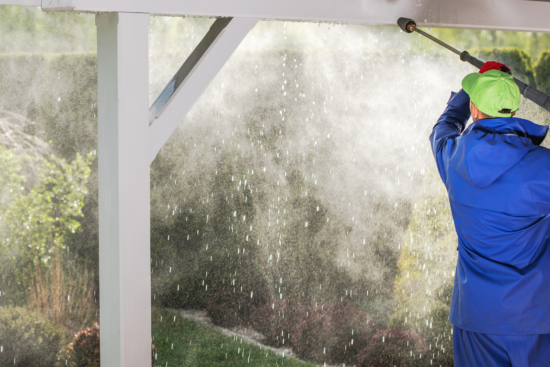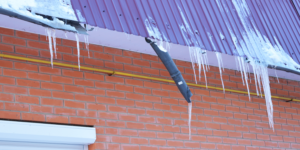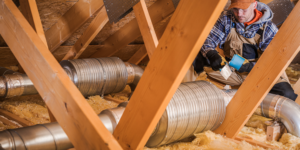© All Rights Reserved | Roof Replacement and Repair - Zaman Roofing LLC. | Website Design & CT SEO Powered by High Point SEO CT
- Google Rating5.0Based on 33 reviewsZaman Roofing - CT Roofing Contractors & Roof Repair5.0Sergey Y."Zaman Roofing” recently completed a roof replacement project in our condo complex, and we are extremely satisfied with their service. From start to finish, their team demonstrated professionalism, efficiency, and exceptional craftsmanship. They were prompt in their communication, providing detailed explanations and answering all our questions. The crew arrived on time, worked diligently, and completed the project within the estimated timeframe.Not only did Zaman Roofing exhibit outstanding technical skills, but they also ensured minimal disruption to our daily activities. They took great care to protect our property, cleaning up thoroughly each day and leaving no trace of debris behind.The quality of the new roof is outstanding. Zaman Roofing used top-grade materials and paid attention to every detail, resulting in a sturdy and visually appealing finished product. The roof has significantly enhanced the overall appearance of our condo complex.We would highly recommend Zaman Roofing to anyone in need of roofing services. Their professionalism, expertise, and attention to customer satisfaction make them a reliable choice for roof replacements. We are grateful for their excellent work and would not hesitate to hire them again in the future.Christopher Z.Zaman Roofing was AWESOME!!!! This is my third time doing a roof in CT on my third home and Zaman did an outstanding job on my rather unique roof line. They even replaced a skylight. I needed a Roof Contract in place before insurance would allow the purchase because the seller was a DeeBag. Zaman worked with my realtor, banker, etc and even waited patiently while the seller delayed the process by 4 months. The week I closed, Zaman Roofing was up and at em. Stripping, prepping and replacing. In and Out. Property was nice and clean after the work was complete. I would highly recommend.Steve TZaman Roofing, located in Berlin, CT, truly excels in providing top-notch roofing services. I am absolutely thrilled to give them a well-deserved 5-star review for their outstanding work. They have proven themselves as experts in roofing Berlin CT, and I couldn't be happier with the results.When it comes to roofing in Berlin, Zaman Roofing stands out from the competition. Their team of skilled professionals demonstrated exceptional attention to detail during the installation of my new roof. They meticulously handled every aspect of the project, ensuring both aesthetics and durability were top-notch.What impressed me the most was Zaman Roofing's commitment to customer satisfaction. From my initial contact with them, they were responsive, courteous, and eager to understand my specific roofing needs in Berlin. Their exceptional customer service throughout the entire process made me feel valued as a client.Zaman Roofing's expertise in roofing Berlin is truly commendable. They have an extensive portfolio of successful projects throughout Berlin, CT, showcasing their skill and knowledge in a variety of roofing styles and materials. Regardless of the complexity of the job, they have the necessary resources to deliver exceptional results.I cannot emphasize enough how satisfied I am with Zaman Roofing's services in Berlin, CT. Their professionalism, reliability, and dedication to their craft are unparalleled. If you're searching for exceptional roofing services in Berlin CT, Zaman Roofing is the company to choose. They will exceed your expectations in every way.In conclusion, Zaman Roofing unquestionably deserves a stellar 5-star rating for their exemplary roofing services in Berlin, CT. Their expertise in roofing Berlin and roofing Berlin CT shines through in their exceptional workmanship and customer service. I highly recommend Zaman Roofing for all your roofing needs.Gary G.Zaman replaced the roof on my 2,200 sq. ft. colonial in 2015. The workmanship was perfect. Unfortunately, over time, the top-of-the line shingles discolored. He was totally supportive in getting the manufacturer to replace them at no cost to me. He just replaced the roof with the new shingles. It was another perfect job. It was completed in one day. The crew was great and they cleaned the area spotless.Chris DWe used Zaman Roofing for our Roof and Gutter Replacement, I acquired 5 quotes for the work and found Zaman to be the most reasonable, it was a Good Decision to choose Zaman Roofing, Seweryn was Professional in every aspect and the Clean-up was nothing short of Amazing, I would Highly Recommend using Zaman RoofingRobert D.Excellent Service and Value - great crew and easy to deal with - highly recommended !Sunghoon P.Great work and reasonable price. I am so happy with their service. I asked a bunch of questions before and after the service and his responses were very prompt and straight to the point. Highly recommend.Adrienne M.I am so pleased that I used this company. My new roof looks fantastic. Such a hard working crew. Seweryn was informative and professional. Price was very completive. Don't hesitate to use them you will be very satisfied. Highly recommend!Nancy M.Good communication, timely response and knowledgeable. Very happy with our experience and highly recommend this company.Beata M.We used Zaman for our roof replacement recently and are very pleased. They replaced our roof in one day and gave us a very competitive quote. Good quality of work. Highly recommended.Lori K.They were here when they said they would. Professional & left everything neat ,cleaned up everything. They were in & out in a day & a half. Would recommend Zaman roifing.Dan R.A+ service, professional and quick response time.Anna G.Zaman and his crew provide great workmanship they installed new roofs they take great pride in the work they do. They were punctual and did a amazing job with the roof installation and clean up. Highly recommend Zaman Roofing to family and friends. Thank you for the opportunity to work with such a amazing contractorScott M.Awesome contractor, I would highly recommend him to family & friends. Seweryn & his crew were here on time & worked diligently. They were the happiest workers I've ever dealt with (I am a former construction project manager with the Federal government). Any & all questions were answered. My neighbors couldn't believe they finished the job in one day & complimented how great the new roof looks.Clement D.Great roofing contractors. I love to recommend it to my friends and family.Karen 9.With the quality, price, timeliness, all round nice guy and great crew, Zaman Roofing LLC is what other companies aspire to be.... Clean, helpful and a pleasure to recommend....james C.Excellent experience from start to finish, all appointments and work times met in a timely fashion, workmanship and clean up left nothing to be desired.Would be a definite recommendation, very pleased.Margaret B.I had obtained multiple quotes and did my due diligence research and Seweryn Zaman came back with fair price and good recommendations. He was professional, explained everything that he was going to do and never once he rushed me during decision process. He showed up on time with his hard working crew and finished my roof in one day. I was amazed with his crew who worked like busy bees. Very impressed with the clean up process and the end product. Two months after he finished my roof he was still helping me deal with the insurance company making sure I had everything I needed. Thank you SewerynSteve B.Very professional and easy to work. The crew came in, replaced my roof and then cleaned up everything! Highly recommended.Jim O.Competitive quote among four others. Seweryn Zaman provided larger color samples of the shingle colors we were interested in. He obtained the building permit, showed up on the day expected with his entire crew. Our older roof was on 24" trusses and needed more plywood replaced than anticipated. He got the additional sheets replaced on the day of the re-roofing. The crew worked with him late until the job was done and picked up every piece of old debris. The roof passed final town inspection with no concerns. Zaman Roofing is easy to deal with; he's responsive on text messages and phone calls. I used them in the past for an emergency repair and he found a well-hidden leak from the builder.Dale C.The crews did a good job, and the leader of the crew did a great job when they replaced the roof of my house in Farming on 7/6&7 this year. When they worked on the project, they worked professionally and in detail. We are very pleased with the work they have done, and highly recommend people to have the company worked on their roof projects.Forrest B.Zaman's was very professional, excellent quality of work and very responsive to our needs. This roofing experience was excellent from start to finish and provided an excellent value. Would certainly recommend them to any friend.Yonatan M.We used Zaman Roofing to replace our roof in 2019 and could not be happier with the service and product. A highly professional company and great personal interaction with the owner. The workers took great care of our landscaping, and the owner was there frequently to supervise the work and take care of finishing touches like flashing the chimney. We have had zero issues since then and highly recommend this company.Quinn V.Zaman was awesome. He was communicative, on-time, and was able to give me a quick inspection of our roof despite the rain. I rarely have a contractor tell me that I didn't need to spend any money, but Zaman told me my roof was fine for the next several years.magdalena K.We recently used Zaman Roofing to replace our 26-year-old roof. Right from the start they were great! Sevy was extremely professional and knowledgeable and gave us a great quote. Everything was done as they described and the final project looked great. The owner was on the job from start to finish as he promised.Ariadna G.Our experience with Zaman Roofing was excellent. I was very impressed with both their work and their customer service. Seweryn was very knowledgeable and professional.Larry G.What a wonderful business. Very responsive. They showed up exactly when expected, completed the project quickly and accurately and left no trace after clean up. All with a very competitive price. I would highly recommend Zaman to anyone looking to have roofing work done.STEVE R.I was very pleased with the roof and gutter repairs performed by Zaman Roofing on two of my buildings. Good workmanship and fair prices, I would recommend and use again.Danielle D.These guys stripped and reshuffled my roof is 1 day! They did an awesome job. Roof is beautiful. He uses a dump trailer which is great and they cleaned up well. Very happy with the work. Also pricing was fair.

Preventing Ice Dams: Tips for Winter Roof Maintenance
Category: Roof Maintenance • November 21, 2023
Snow-covered rooftops and icicles on eaves make winter beautiful. These cute pictures may indicate ice dams, a serious issue. Ice dams damage roofs and homes if left untreated. Do not worry! We will discuss ice dam causes, their consequences on roofs and homes, and most importantly, winter roof maintenance measures to prevent them.
Causes of Ice Dams
Ice dams are prevalent in winter, but why do they form? Understanding these issues might help you secure your roof and house.
Insufficient attic insulation causes ice dams. Attic heat can heat the roof underside when warm air from inside your home rises. This heat melts roof snow, which refreezes at the colder eaves, causing ice dams.
Poor attic ventilation contributes. Heat is trapped without appropriate airflow, causing roof temperature imbalances. This mismatch causes ice dams.
Lack of sunlight can also cause ice dams. Snow may not melt evenly on your roof if some sections receive less sunlight. Ice dams arise when water refreezes in colder locations due to unequal melting.
Blocking gutters and downspouts also causes ice dams. Debris in gutters and downspouts slows roof water flow. Trapped water freezes, forming ice dams.
You can prevent problems by understanding these factors. Insulating and ventilating your attic, cleaning gutters, and trimming trees to ensure even sun exposure across your roof will help prevent ice dams from damaging your home this winter.
Effects of Ice Dams on Roofs and Homes
If left uncontrolled, ice dams can damage your roof and home. When snow melts on the roof’s warmer sides and freezes at the colder edges, these icy structures appear. Ice blocks drainage, causing water to pool.
Ice dams cause roof leaks immediately. Water behind the dam seeps under shingles or through roof crevices. Water stains on ceilings, bent walls, and structural damage might develop if not handled immediately.
Overexposure to ice dam moisture can also develop mold. Mold grows quickly in moist attics and living spaces, causing health dangers to you and your family.
Ice dams damage gutters and downspouts as well as inside structures. They may sag or fall off the roof due to ice buildup. Falling gutters could injure pedestrians.
Ice dams’ continuous freezing and thawing can degrade roofing materials if left unchecked. Ice expansion can crack shingles.
Preventing ice dams with proactive winter roof maintenance can save your property from these damages.
Winter Roof Maintenance Tips
- Roof Snow Removal
To avoid ice dams, clean snow from your roof periodically. Use a roof rake or contact specialists to securely clear snow. Work from the roof edge up, taking care not to damage shingles or gutters. - Insulating and Ventilating Attic
Attic insulation and ventilation regulate temperature and prevent condensation, which causes ice dams. Make sure the attic floor and living spaces below are well-insulated and have air vents. - Heat Cable or Panel Installation
Avoid ice jams by putting heat wires or panels along your roof’s edges. These devices heat snow before it freezes into dangerous shapes. - Checking Gutters, Downspouts
Check gutters and downspouts throughout winter for debris that could block water flow during thaw cycles. Water backlog from improper drainage can cause leaks and damage. - Regular Roof Inspections
An experienced roofing contractor can spot flaws before they become serious ones with frequent inspections. They will look for ice dam-causing shingles, flashing fractures, and other wear.
This winter, prevent ice dams from damaging your home! Avoid costly repairs from heavy snowfall and freezing conditions without compromising safety by following these maintenance guidelines! Be proactive about roof health year-round!
Clearing Snow from the Roof
Clearing snow off your roof is crucial to preventing ice dams. Snow on your roof helps insulate your property from heat loss. This trapped heat melts snow, which can build ice dams on your roof.
Start with a long-handled roof brush or rake to remove snow. From the ground, carefully push or pull off the snow. Slippery roofs are perilous to stand on.
Clear snow in parts rather than all at once. Push or pull snow from the roof’s edge to the middle. Stop frequently to rest and check for falling icicles or unsafe footing.
Hire a skilled roofing contractor who can securely remove snow without damaging your shingles or structure if your roof is too high or steep.
Winter maintenance operations like roof snow removal should always prioritize safety. Taking precautions during winter storms can help prevent ice dams and water damage to your house. Stay tuned for additional winter-ready roof maintenance advice!
Insulating and Ventilating the Attic
Winter ice dams can be avoided by insulating and ventilating your attic. Warm air escaping through the roof can melt and refreeze snow along the eaves without proper insulation. Proper attic ventilation reduces moisture buildup and ice dams.
Make sure your attic is well-insulated. Add or upgrade insulation with fiberglass batts or blown-in cellulose. Cover everything, including pipes and vents.
Inspect ventilation next. Your home’s attic ventilation controls temperature and humidity. Soffit vents at the eaves and ridge vents at the roof peak can accomplish this.
By properly insulating and venting your attic, you prevent heat loss from your home’s interior and maintain airflow. This reduces roof snowmelt and ice dams.
If you’re unclear on how to insulate or ventilate your attic, ask an expert. They can assist with any essential measures or suggest performance improvements.
These preventative methods will help your home avoid ice dam damage this winter!
Installing Heat Cables or Panels
Heat wires or panels on your roof can avoid ice dams. These systems melt roof snow and ice to prevent ice dams.
Heat cables are electrical lines installed in gutters and roof eaves. They melt snow and ice before it forms an ice dam by generating heat.
Heat panels, which are larger heating elements, can be mounted directly on your roof. The heat from these panels melts snow and prevents ice dams.
Both heat cables and panels have thermostats for on/off control. This reduces energy use by only running when needed.
Before installing these systems, visit a professional roofer to assess your needs and offer the best alternative for your property. They will be installed properly to maximize performance without roof damage.
You may prevent costly ice dam damage this winter by installing heat wires or panels. Don’t let icicles deceive you—act immediately before it’s too late!




